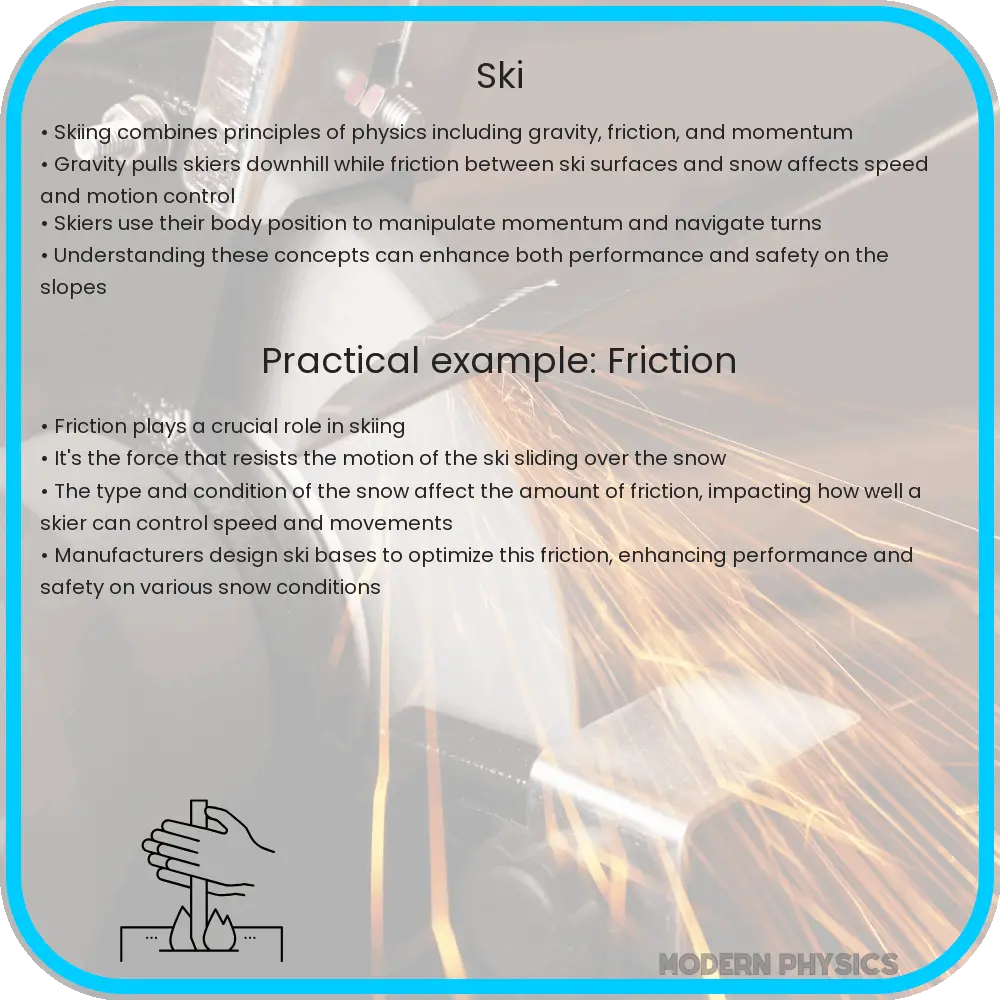Explore the essentials of ski kinematics and dynamics, unraveling the physics of skiing for enhanced performance and injury prevention.

Understanding Ski Kinematics and Dynamics: The Fundamentals
Skiing, a sport beloved by many for its exhilarating nature, combines elements of speed, precision, and physical prowess. To truly appreciate and improve in skiing, it’s essential to understand the principles of ski kinematics and dynamics, which involve the study of motion and forces. This understanding not only enhances performance but also aids in preventing injuries.
The Role of Kinematics in Skiing
Kinematics in skiing primarily deals with the motion of the skier without considering the forces that cause this motion. It includes aspects such as velocity, acceleration, and the trajectory of the skier’s path. For instance, when a skier navigates a turn, the radius of the turn and the angle of the skis relative to the snow are crucial kinematic factors. These elements affect the skier’s speed and control.
Dynamics: The Forces Behind Skiing
While kinematics describes how a skier moves, dynamics explains why these movements occur. This involves analyzing the forces at play, including gravity, friction, and air resistance. A key concept in ski dynamics is the Centripetal Force, necessary for turning. It’s the inward force that keeps the skier moving along a curved path, countered by the centrifugal force experienced by the skier.
Ski Technique: A Blend of Kinematics and Dynamics
Effective skiing technique is a harmonious blend of kinematic and dynamic principles. Skiers must manage their body position and ski alignment to optimize balance and control. For example, during a downhill run, a skier’s ability to maintain a low center of gravity while aligning their skis parallel significantly impacts their stability and speed.
Motion Analysis in Skiing
Advancements in technology have enabled detailed motion analysis in skiing. Using sensors and video analysis, coaches and athletes can dissect movements to fine-tune techniques. This analysis often focuses on parameters like ski edge angles, body posture, and timing of turns. Such detailed scrutiny helps in identifying areas of improvement and in understanding the intricate interplay between the skier and the slopes.
Understanding the nuances of ski kinematics and dynamics is crucial for both amateur and professional skiers. It not only enhances performance but also plays a significant role in injury prevention. By comprehending these principles, skiers can make informed decisions about their technique and equipment, leading to a safer and more enjoyable experience on the slopes.
Advanced Concepts in Ski Kinematics and Dynamics
Delving deeper into ski kinematics and dynamics, we encounter concepts like angular momentum and mechanical energy conservation. Angular momentum plays a crucial role in jumps and spins, where the skier’s rotational speed and axis dictate the success of these maneuvers. Conservation of mechanical energy is evident when a skier converts potential energy (gained by ascending to a higher altitude) into kinetic energy during a descent.
Impact of Equipment and Terrain
The interaction between equipment and terrain further complicates the kinematics and dynamics of skiing. Ski design, including length, width, and flexibility, significantly influences the skier’s ability to maneuver and maintain control. Similarly, varying snow conditions – from powdery to icy – affect frictional forces, requiring skiers to adapt their techniques accordingly.
Biomechanics: The Human Element in Skiing
Biomechanics, the study of the mechanical aspects of living organisms, is pivotal in understanding skiing. The strength, flexibility, and reaction time of the skier directly impact their ability to execute movements efficiently and safely. Proper alignment of joints and muscles during skiing minimizes the risk of injury and improves overall performance.
Environmental Factors
Environmental factors like temperature and altitude can influence ski performance. Colder temperatures typically make snow icier and faster, altering the dynamics of skiing. Higher altitudes may reduce air resistance slightly but can also affect a skier’s stamina and breathing due to thinner air.
Conclusion
In conclusion, the art and science of skiing are deeply rooted in the principles of kinematics and dynamics. An understanding of these concepts allows skiers to enhance their performance and safety on the slopes. From the basic physics of motion and force to the advanced analysis of biomechanics and environmental effects, skiing is a complex interplay of multiple factors. By embracing these principles, skiers can refine their techniques, optimize their equipment, and appreciate the intricate ballet between the human body, the skis, and the mountain. Whether a beginner or a seasoned professional, a deep dive into the kinematics and dynamics of skiing offers a pathway to mastery and a deeper enjoyment of this exhilarating sport.
